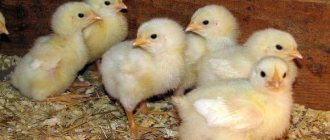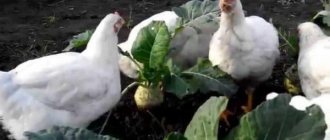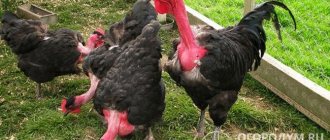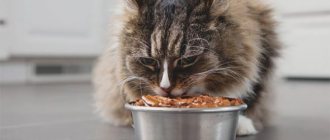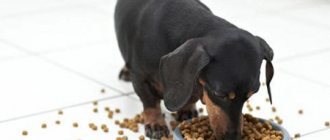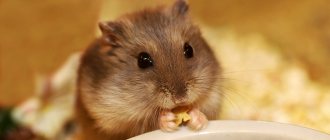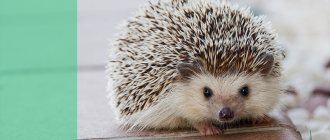How to make it yourself: how much you need
Self-production of feed mixtures allows you to reduce the cost of fattening livestock, especially if you use products available on the farm. The only equipment you need is a grain crusher. There is also no chance of purchasing low-quality feed, because the production process and composition are regulated by the owner himself. Remember that during production it is necessary to calculate the amount of feed of each type per number of broilers.
Good pre-start and start
The basis of the starter feed is corn. It accounts for almost half of the total volume and cannot be replaced (there are no cheaper or more accessible analogues of this crop). Another 20% of the mixture is sunflower meal and cake; they can be replaced with the same processing products of any oilseed crop (rapeseed, flax). Of the grains that are most suitable for chickens, wheat or oats account for 17-19% of all feed. Herbal flour or dry skim milk is mixed in as a vitamin supplement. You should also add some feed or fish oil, as well as a good shelf life vitamin premix.
Cooking at home with your own hands: instructions, consumption conditions
Growth compound feed at home is prepared (cooking) from:
- corn grains;
- oats or wheat;
- barley;
- meat and bone meal;
- herbal granules;
- growth yeast;
- feed fat (no more than 2%);
- dry skim milk
After crushing, dilute the mixture with water to a thick mushy mass, which is passed through a meat grinder. You will get convenient storage granules, just let them dry thoroughly. Eggs or dairy products are mixed in right before serving.
You can add table salt, feed chalk, protein and vitamin concentrates to the composition - all no more than 3%.
Finish for broiler: how to feed and raise
This type of feed should be prepared the most, since it is required for the longest stage of fattening. The final diet includes:
- corn grains;
- any legumes (peas, beans, soybeans);
- wheat, oats or barley;
- feed yeast;
- feed fat;
- chalk or limestone;
- protein-vitamin concentrate (here it accounts for up to 12% of the total mass).
The granules should be made as large as possible to increase the period of food consumption, digestion and the percentage of well-stabilized nutrients.
Technologies
Certain components used in wet and dry feed mixtures require preliminary preparation.
Yeasting
Yeast is not just poured into a container with food. It is necessary to carry out a fermentation process, as a result of which the feed is saturated with vitamins and is more easily absorbed by the bird.
The required amount of yeast (fodder or regular baker's yeast) is poured with a small volume (1-2 liters) of warm water (its temperature should not exceed 50 ℃) and left for several hours to activate.
The resulting solution is mixed with grain and continued to infuse for 8-10 hours
Malting
No more than 20% of the grain is poured with boiling water in a ratio of 1:2, wrapped and left warm for 4-6 hours. As a result, part of the starch breaks down into sugars, which improves the digestibility and palatability of the feed.
Germination
The grain is filled with water and kept for about 12 hours. After this, the grains are transferred to a colander or bag (for large volumes) to get rid of excess liquid, and placed in a warm place for germination. Some poultry farmers recommend germinating grains in the light and in a layer of no more than 2 cm. But with a large number of birds, such a procedure requires a significant area. Therefore, germination is usually carried out in bags or barrels.
How to feed broilers correctly?
When raising broiler chickens, you need to know some rules for feeding them:
- Broiler feeders should always be full so that the birds get enough to eat.
- Since chickens love healthy and environmentally friendly pasture, in the summer they can be released for walking, where they will feed their bodies themselves, and there will be less expense on special food.
- Laying hens should definitely add calcium to their diet in the form of eggshells or special calcium supplements. Even ground chalk used as poultry house filler is suitable. The chickens peck out small pasture from it, as a result of which the chalk enters their bodies in parts.
- To prevent broilers from chewing the muscles in their mouths, sand additives are used. Since chickens do not have teeth, food is crushed only in the stomach by contraction. Sand will help turn large foods into small ones.
- Feed made from high-quality grain and various additives must be properly stored. Otherwise, it will only cause harm. It should be stored in a tight, airtight container that should be dry. High humidity and dampness can render food unusable. It is also necessary to protect it from various rodents and wild birds, which can introduce parasites and viruses into the food.
It is very important to take care of drinking bowls and feeders, which should always be clean. Unsanitary conditions can lead to poor digestion in birds, which will slow down their growth.
Therefore, when containers for food and water become dirty, they are thoroughly washed in hot water.
Broilers are practically omnivores, but it is not recommended to add the following products to their diet:
- pure vegetable oil and butter;
- jam;
- fermented foods and alcohol;
- chocolate and cocoa;
- cheeses;
- new milk;
- sausages;
- peels of melons and citrus crops.
With proper maintenance, care and feeding of broilers, two batches of broiler chickens can be raised at home between May and August. At the same time, with minimal costs for food, the family will be provided with tasty dietary meat.
Use of dyes
To increase the “attractiveness” of the carcass, some poultry farmers use corn, carrots, and beets as dyes, adding them to the diet of their chickens. As a result, the chicken skin becomes more appetizing, acquiring a yellowish color. This does not affect the taste in any way.
It is recommended to add natural dyes to the diet of young animals in cases where broiler meat is going for sale, starting 2-3 weeks before slaughter. The demand for such products is significantly higher.
Pros and cons of raising broilers
When trying to raise broilers, farmers are faced with a number of problems related to their lack of understanding of the possible disadvantages of breeding this particular breed of chicken.
The main disadvantages include:
- high feed consumption (needs to be fed frequently);
- variety of food supply;
- blanching of the skin after slaughter (affects consumer demand);
- the need to limit the movement of birds around the premises;
- the difficulty of choosing precisely purebred birds (no one is yet safe from unscrupulous sellers).
In addition, some broilers do not lay eggs well, so raising them for eggs is not practical.
The undoubted advantages of the breed are:
- large increase in meat in the shortest possible time;
- unpretentiousness to living conditions;
- resistance to diseases.
For most farmers who decide to breed broilers, these qualities of the bird are a priority.
Broilers are slaughtered when they reach 2 months of age, saving time and space. The need to take care of keeping birds in winter disappears. Broiler meat is tender and tasty. White meat is of particular value; there is a lot of it and it can satisfy the needs of any gourmet.
Diseases due to poor nutrition
What do broilers get sick with? Their main ailments are non-communicable diseases. The bird suffers due to improperly organized care, violation of feeding patterns and unsuitable living conditions. The owner himself is to blame for all the troubles, as he ignores special literature and advice from fellow experienced poultry farmers.
Having bought a day-old broiler, a novice breeder does not know how to feed it correctly. Unknowingly, he gives him adult food, which causes irreparable harm to the still unformed digestive system. Due to the reduced acidity of gastric secretions, the amount of digestive enzymes is small.
If this fact is not taken into account, in the future the chick will die due to improper feeding and developed gastrointestinal diseases. It is more sensitive to the quality of food than an adult. If you give him rotten, sour food and water of poor quality, he will die, and the breeder will suffer losses.
Hypovitaminosis A, B, D, E is often diagnosed in broilers, noticing the following signs:
- convulsions;
- walking in circles;
- problems with coordination;
- diarrhea;
- refusal to eat.
What to feed chickens?
Newborns
As you know, the first food for a chicken is provided in the egg. Before hatching, it eats the remains of the yolk, so there is no particular need to feed newborn babies right away. Let them dry and rest for a while.
There is now a lot of disagreement and controversy regarding the first food. The fact is that for many years, crushed boiled yolk was considered the optimal food after hatching. But recent discoveries have found it to be too fatty for the delicate stomachs of chicks. In view of this, it is now generally accepted that the best first food is corn grits.
Afterwards, the kids can be given a hard-boiled yolk mixed with semolina (so as not to stick together), starter feed, boiled and finely chopped nettle greens. On the third or fourth day, you can diversify the diet by adding wheat and barley cereals, grated boiled potatoes and carrots, and chopped green onions.
Chickens need to be fed kefir or given finely crumbled cottage cheese, because chicks need calcium. Some poultry farmers add Linex or Bifidumbacterin to their chickens' water to maintain intestinal microflora.
In the first week, be sure to check the chicks' crops before going to bed. Feed those who have empty ones separately.
Weekly
Week-old chicks are fed a mash of corn, barley, wheat and oatmeal (or chicken feed) + grass, vegetables (potatoes and carrots) and fermented milk products. The number of feedings per day is at least 7 times. At one week of age, chicks should be given a weak solution of potassium permanganate 3 times a week to prevent infections.
Two weeks
Already grown chicks can add soaked bread (mixed into cereals) and boiled fish to their diet. Do not forget to monitor the freshness of the food in the feeders; always give the chicks as much food as they will eat at a time so that they do not trample it. Compound feed can already be slowly replaced with bran. The number of feedings for two-week-old chickens is 6-7 times a day.
Menstruation
We also continue to feed the birds vegetables and vegetable waste, fermented milk products and cereals. You can give lean meat scraps (boiled). Chicks should have a separate feeder with gravel, sand or crushed eggshells.
Three months old
From three months, chickens are already transferred to the food of adult chickens, but young animals should be fed more densely and more often.
If the young animals do not have greenery growing in their pen, you need to give them fresh grass every day. Most often, hanging feeders are made for birds so that the greenery does not get trampled.
Content preparation
In cells
How to raise healthy chickens at home? When keeping chickens in cages, the following conditions must be met:
- dryness and cleanliness;
- maintaining the required temperature and humidity;
- well-chosen lighting and ventilation modes.
The poultry house must first be disinfected, dry, loose bedding must be laid on the floor, and the presence of rodent protection must be checked. Lastly, equip the cage with everything necessary to support the life of the chicks. This should include not only lamps, but also heating equipment, feeders, and drinking bowls. There are 12 chicks per 1 m2.
During the first days of laying chickens being raised at home, they suffer from hypothermia or excessively high temperatures. It’s just that before the age of one month, their body has not yet had time to adapt to changes in external conditions.
Attention! The farmer must carefully monitor temperature and humidity indicators. If the room is cold, then install additional heating devices; if it is hot, then ventilate regularly.
On bedding
Chickens are kept on deep, permanent litter. Thanks to it, a large amount of thermal energy is released. This protects the chicks’ limbs from exposure to low temperatures and has a positive effect on their general condition and health. Due to the permanent decomposition that occurs in the litter under the influence of bacteria, chickens receive an auxiliary source of biologically active substances.
If you properly care for the litter, it will not stick together into lumps. The most commonly chosen materials for bedding are:
- peat;
- straw chaff;
- wood shavings;
- sawdust.
Practical advice on feeding broilers with compound feed
We have already said that feeding birds with compound feed is both profitable and convenient. In order to properly organize the nutrition process and get the desired result, you should adhere to some rules, namely:
Pay attention to the amount of corn in the feed; the more of it, the more energy the birds will receive. As a percentage, it should be at least 40%
If wheat predominates in the feed, it is necessary to add vitamins A and B6, as well as biotin, to the broiler diet. If the chicks do not have enough energy, 1-2% fat should be added to the diet, which will increase the calorie content of the food. Starter feed is smaller than growth and finish feed, so that it is easier for chicks to eat and digest it; the diameter of the grains should not exceed 2.5 mm. If for some reason you plan to change feed or diet, this should be done gradually. Before feeding the birds, it is recommended that they be given plenty of water to drink. The transition from starter to growth compound feed should be carried out only when the birds have gained the required weight, and exactly the same should happen with the transition to the finishing feed, which is fed until the moment of slaughter of the bird. In the first week of life, chicks should be given large portions of dry food, and then gradually reduce the amount.
Did you know? Laying hens eat damaged eggs or throw spoiled eggs out of the nest.
DIY nutritional mixture
For an adult, it is not necessary to buy food in the store. You can prepare it yourself using the following recipe:
- 3 gr. feed fat;
- one gram each of chalk and grass;
- 5 gr. feed yeast;
- 8 Gr. barley;
- 13 grams of wheat;
- 17 grams each of fish/meat and bone meal and meal/cake;
- 45 gr. corn.
Reference! The weight of the ingredients is calculated to produce 100 grams of the finished mixture.
What to feed broilers at home?
As mentioned above, broilers gain weight fastest on mixed feed. At home, you can use both dry feed and wet mash, combining them with cereals and concentrates.
Dry feed
Dry feed is a mixture of loose granules made from a mixture of cereals. amino acids, protein, fats, vitamins, minerals and proteins.
Regardless of the age of the chicken, it should have constant access to this type of feed. At the same time, the composition of the feed changes as the bird grows. Dry mixtures are purchased in specialized stores or mixed independently. The last option is the most acceptable, since it allows you to make the food more healthy and nutritious.
The composition of dry feed includes:
- fat;
- chalk;
- salt;
- bone (fish) maca);
- cake, meal;
- wheat;
- corn.
As mentioned above, the percentage of individual components changes with the age of the bird.
Wet mash
They are ordinary feed mixed with water, milk, boiled eggs or herbs. There are many options for preparing wet mash. The main rule is the optimal amount of dry mixture and water. Once the mixing is complete, it shouldn't turn out to be porridge; only ducks and geese like it. Broilers prefer the mixture to consist of small, easily crumbling lumps. The mash needs to be kneaded enough so that the birds have enough for one time. Unused porridge is thrown away. Mash that has lost its freshness can provoke the development of intestinal diseases and cause the death of not only young animals, but also adults
You need to feed mash with caution.
Combined nutrition
- For rapid growth and gain of live weight, one type of feed is not enough for broilers.
- The daily diet should be combined. So, in the morning you can mix the birds a mash, give them dry feed for lunch, and in the evening feed them greens from the feed.
- The more nutrients there are in the feed, the faster the broilers will reach the weight required for slaughter.
- It is not advisable to keep birds for more than 2 months, so they should be fed nutritious and high-quality food, which allows them to gain body weight several times faster.
Using BMVD
- Recently, farmers are increasingly resorting to various tricks to accelerate the growth and body weight of poultry.
- One such trick is to feed broilers protein concentrate.
- It cannot serve as the only food for birds, but as a nutritional supplement, it provides significant weight gain, increases resistance to disease, reduces the risk of death of chicks, increases egg fertility, and reduces feed costs per unit of production.
- The use of protein concentrate can increase the productivity of livestock.
- For normal development of the bird, it is enough that the total amount of concentrate in the feed ranges from 5 to 20%. You cannot feed birds exclusively with concentrate.
Feeding without feed
- If you plan to grow them on a small farm where all feed is produced independently, the question arises about the need to feed them with purchased feed.
- Some farmers fear that fattening broilers without feed is impossible. Actually this is not true.
- Most birds are quite omnivorous, therefore, if desired, broilers can be fed with sprouted grains (proteins, proteins), boiled pork skin, potatoes and other vegetables, crushed to a porridge state and mixed with cereals.
- Birds that eat corn and wheat gain weight well. In this case, you can give them grains in their pure form or in the form of cereals.
- You can’t feed corn alone; the birds get fat and may die. But corn can be used as an additive to wheat, potatoes and greens. The main thing is that the feeders are never left empty.
Mash recipes
Mash is the most popular type of feed in households. Some poultry farmers take everything to prepare them: table scraps, spoiled food, grass, inexpensive grains. Others prefer to use one main ingredient, making up up to 70% of the bird's diet, combined with supplements to supplement vitamins and minerals.
Raising broilers mainly on wheat ensures high taste of meat. Corn gives good daily growth. Potatoes significantly reduce fattening costs.
However, an incorrectly prepared diet has a negative impact on the overall yield: the mortality rate increases, the growing time is delayed, and the nutritional value of meat products decreases. As a result, instead of saving, you end up with a loss.
The first feeding is carried out immediately after the chicks have hatched and dried out.
From the first day, small chickens are given a hard-boiled egg. Starting from the 3rd day, add low-fat cottage cheese, finely chopped grains, herbs and vegetables. From the 5th – minerals are introduced. Meal or cake and root vegetables are added to the diet of week-old chicks. After the 10th day, eggs are removed from the diet.
Wet mash is given to birds older than 3 weeks.
The use of mash prepared according to the correct recipe helps reduce the cost of commercial feed and has a beneficial effect on all productive indicators.
The proposed recipes for the growth and finishing periods are based on publications on farming forums and methodological recommendations for raising broiler birds per 1 head per day (the final nutritional value for each of the three options is approximately the same):
| Option 1 | Option 2 | Option 3 | |||
| Products | Quantity, g | Products | Quantity, g | Products | Quantity, g |
| Crushed | 20 | Crushed | 30 | Crushed | 60 |
| Lactic acid | 10 | Lactic acid | 40 | Lactic acid | 40 |
| Potato | 50 | Potato | 20 | Potato | 30 |
| Vegetables | 10 | Vegetables | 20 | Vegetables | 20 |
| Corn | 40 | Millet | 30 | Yeast | 7 |
| Peas | 10 | Barley | 10 | Cake | 5 |
| Soybeans | 5 | Greenery | 10 | Meat and bone/fish meal | 5 |
| Bone flour | 5 | Yeast | 7 | Chalk | 3 |
| Fish fat | 1 | Cake | 5 | Fish fat | 0,2 |
| Salt | 0,1 | Salt | 0,2 | Salt | 0,1 |
There is no point in paying attention to the final weight of the feed. It may be voluminous, but empty (due to the abundance of water, indigestible substances or low-nutrient ingredients) or there may be little food, but everything is balanced in it.
The potatoes are pre-boiled and pounded. The use of cleanings is acceptable. The grains are steamed or germinated. Vitamin and mineral complexes must be added to the mash.
When purchasing VM supplements, you must carefully read the instructions for use and adhere to the indicated dosages
Long-term storage of mash must not be allowed! They are prepared immediately before feeding. The bird should empty the feeder in approximately 2 hours.
Giving mash to chickens under three weeks of age is not recommended due to the increased risk of poisoning and intestinal disorders.
Features of feeding
Laying chickens
In the first 7 days they are fed similarly to other chickens. Next add dry food. Flour is sifted from the grain film, since young chickens do not digest it well.
It is necessary to add protein and foods rich in vitamins (herbal flour, carrots, herbs and cottage cheese) to the diet of young laying hens.
Chicks are taught to eat fresh greens from infancy, which helps further reduce the cost of nutritional supplements.
Future laying hens urgently need a large amount of calcium in their diet for shell formation. You can also give the chicks shells or chalk.
For confined chickens, fish oil is a good nutritional supplement. It can be mixed with crushed grain, which will speed up its absorption. Future laying hens must have a certain weight at each age:
- Month-old hens - 270 g, cockerels - 290 g;
- Three-month hens - 1000 g, cockerels - 1150 g;
- Five-month-old hens - 1700 g, cockerels - 1900 g.
Weight control will help you raise the strongest laying hens.
Broilers
Broilers grow quite quickly and are large in size. There are certain norms and rules for feeding broiler chickens.
They are unpretentious in food. This is the main reason why poultry farmers choose to grow broilers.
In a couple of months they can reach a weight of 1.6 kilograms. They are grown for no longer than three months, because... they grow poorly further and feeding them becomes unprofitable.
The diet of broiler chickens is the same as that of laying hens with only one difference: more protein. Compound feed is started on the second day, 20 grams each. The most popular option in the first 14 days is pre-start feed. It is rich in essential vitamins that help the chicken grow faster.
Taking vitamins is mandatory, as they will help avoid the development of many diseases (for example, rickets).
In order to monitor the growth of the broiler chick, weekly weighing is necessary. Sufficient care, a well-designed diet and careful monitoring of the growth of young animals will help raise healthy individuals, regardless of the purpose of breeding chickens.
Frequency of feeding
Feeding of domestic broiler chickens should be carried out according to a schedule. The entire daily amount of feed should be divided into parts and fed at certain intervals. The frequency of food distribution for different broiler crosses is practically the same, but, in general, it looks like this:
- the first 10 days - every 2 hours and 1 time at night;
- from 11 to 30 days - the number of feedings is reduced to 6 times, but the volume of food given at a time is increased: 6:00 - crushed grain; 9:00 – wet mash with chopped herbs and mashed boiled potatoes; 12:00 – dry crushed grain mixture; 15:00 and 18:00 – wet mash; 21:00 – grain (crushed);
- from 31 to 45 days - food is distributed 4-5 times a day.
Broilers are slaughtered at the age of 45 days (if they are kept in cages), and when kept on floors, they can be reared for a maximum of 9 weeks; keeping them longer becomes economically unprofitable.
Weight gain chart
To understand whether a broiler is growing and developing correctly, you need to know the age norms of the chicken’s body parameters. In many ways, the indicators depend on the breed, living conditions, and sex of the bird. On average, the weight gain table for broilers looks like this:
| Age (days) | Weight (g) |
| When hatching | 42-45 |
| 1 | 51-60 |
| 2 | 65-78 |
| 3 | 84-96 |
| 4 | 100-112 |
| 5 | 125-133 |
| 6 | 140-162 |
| 7 | 172-190 |
| 8 | 205-220 |
| 9 | 228-250 |
| 10 | 262-281 |
| 11 | 305-325 |
| 12 | 345-368 |
| 13 | 375-420 |
| 14 | 438-460 |
| 15 | 484-518 |
| 16 | 538-566 |
| 17 | 577-630 |
| 18 | 652-691 |
| 19 | 719-747 |
| 20 | 775-820 |
| 21 | 850-885 |
| 22 | 920-975 |
| 23 | 1000-1050 |
| 24 | 1075-1100 |
| 25 | 1130-1200 |
| 26 | 1220-1270 |
| 27 | 1310-1360 |
| 28 | 1405-1450 |
| 29 | 1470-1510 |
| 30 | 1560-1580 |
| 45 | 2100-2550 |
| 60 | 2550-3100 |
Broilers need to be weighed frequently - at least once a week. Or better yet, every day. It is convenient to use electronic scales to measure the weight of babies.
To do this, you need to use a cardboard box in which the chicken is placed. For weighing older birds, it is better to choose a steelyard. Before measuring weight, the individual is placed in a shopping bag or small bag.
Small deviations from the norm are quite acceptable. However, if the weight differs from the established one by more than 150-200 grams, it is necessary to understand the reasons. Both improperly selected nutrition and the presence of diseases can lead to slow weight gain.
conclusions
- Combined feed mixtures allow you to obtain the largest amount of meat, for this reason they are in great demand among broiler poultry farms.
- Compound feeds are divided into three main types: starting (start), growth and finishing (finish), depending on the period of feeding to the livestock.
- Different types of feed differ from each other in composition and feeding regime for birds.
- You can prepare such bird food yourself, with your own hands according to the table, instructions, and calculations; this will help you save on the purchase of factory-made products.
You can read about feed for laying hens here.
Growth ration (Br-1 or PC 5-2)
Growth feed contains components necessary for growth. The composition, in comparison with the starting mixture, changes slightly. Fats, legumes and salt are added. The amount of wheat is increased, the norms of cake and meal are adjusted in accordance with age needs. The protein group includes bone meal. The dose of vitamins A, D3, E, K3, C, H, and group B is increased.
The norm for two-week-old chicks is 70 g. By the end of the fattening stage, it is gradually increased to 150 g. The diet strengthens the body and promotes weight gain.
